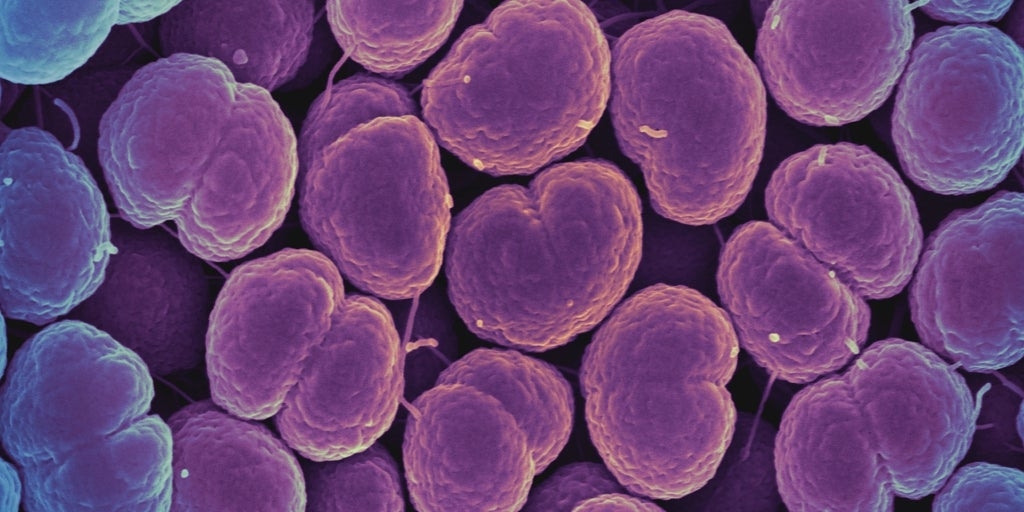More than 1 billion adolescents will have health problems by 2030

By 2030, more than 1 billion adolescents and young people aged 10 to 24 will be living in countries with preventable and treatable health problems such as HIV/AIDS, early pregnancy, unsafe sex , depression, poor nutrition, and injuries.
This is the conclusion of a new analysis by the second Lancet Commission on Adolescent Health and Well-being, composed of more than 40 experts from various countries around the world. The study included input from more than 200 adolescents in 36 countries.
"The health and well-being of adolescents around the world are at a tipping point, with uneven progress observed over the past three decades," said Sarah Baird of George Washington University (USA) and co-chair of the Commission.
Baird explains: "While tobacco and alcohol use have decreased and participation in secondary and tertiary education has increased, overweight and obesity have increased eightfold in some countries in Africa and Asia over the past three decades, and there is a growing burden of poor adolescent mental health globally."
Furthermore, the challenges facing the world's adolescents risk being exacerbated by emerging global issues such as climate change, global conflicts, and the rapid transition to a more digital world.
Investing in the health and well-being of young people is crucial to safeguarding our collective future, according to the Commission, which advocates prioritizing investment in the health and well-being of adolescents with initiatives that strengthen schools to promote health and well-being, and ensure universal access to healthcare for adolescents.
Nearly a decade after the first Lancet Commission on adolescent health and well-being, published in 2016, there have been global improvements in education and in the reduction of global rates of smoking and alcohol consumption.
However, in many areas of adolescent health, progress has been undermined by the COVID-19 pandemic and a chronic lack of funding.
The commission estimates that in 2021, nearly 1.1 billion adolescents lived in countries where preventable and treatable health problems such as HIV/AIDS, early pregnancy, unprotected sex, depression, poor nutrition, and injuries remained a daily threat to their health, well-being, and life chances.
The Commission calls them multi-burden countries. In 2016, there were just under 1 billion adolescents in these nations, which, along with population growth, indicates a lack of progress in addressing adolescent health.
New projections suggest that without political will, policy initiatives, and financial investments, there will still be more than 1 billion adolescents living in countries with multiple poverty burdens by 2030.
The Commission estimates that nearly one-third of adolescent girls will suffer from anemia by 2030, highlighting the inadequacy of efforts to address this problem. The disease can cause fatigue, hamper growth and cognitive development, and, in extreme cases, lead to organ damage.
Similarly, adolescent mental health has deteriorated significantly over the past three decades in countries with available data, a trend exacerbated by the COVID-19 pandemic. By 2030, the Commission projects that 42 million years of healthy life will be lost due to mental disorders or suicide (two million more than in 2015).
Other projections indicate that one-third of adolescents in wealthy countries, Latin America and the Middle East will be overweight by 2030, when 464 million adolescents worldwide will be overweight (143 million more than in 2015).
On the other hand, the second Lancet Commission identifies several significant new threats to adolescent health, emphasizing that young people are navigating a rapidly changing world.
Emerging challenges, such as climate change and the transition to a more digital world, are expected to have a profound impact on the future health and well-being of young people.
The analysis indicates that today's adolescents are the first generation that will live their entire lives with an average annual global temperature 0.5 degrees above pre-industrial levels.
And by 2100, 1.9 billion adolescents will live in a world expected to warm by about 2.8 degrees Celsius (2.8 degrees Fahrenheit) above pre-industrial levels, bringing catastrophic health risks such as heat-related illnesses, reduced food and water quality and availability, and an increase in climate-related mental health conditions.
According to the Commission, both fast-acting climate disasters—hurricanes, for example—and slower-acting effects—such as chronic food insecurity—contribute to mental health conditions in adolescents, such as post-traumatic stress disorder, anxiety, and depression.
Furthermore, the Commission highlights how the digital transition offers adolescents new opportunities for social interaction, education, employment, and health promotion.
However, many key social and emotional experiences now occur online, raising concerns about potential harm to their development and well-being. Although the impact of the digital world, particularly social media, on adolescents' mental health remains hotly debated and causal evidence is limited, it is necessary to balance early protective actions with preventing unwanted harm from excessively restricting digital access, according to the authors.
The Lancet Commission highlights that current funding for adolescent health and well-being is not proportional to the scale of the challenge nor is it targeted to the areas of greatest need.
An analysis of funding by the Commission reveals that the health and well-being of adolescents represents only 2.4% of global aid, despite the fact that adolescents represent 25% of the world's population and 9% of the total burden of disease.
The Commission's analysis of the returns on investments in adolescence shows they are on par with investments in children up to nine years old. Furthermore, funding is hampered by a lack of leadership, governance, and accountability at the global and national levels for adolescent health and well-being, among many other factors.
abc





%3Aformat(jpg)%3Aquality(99)%3Awatermark(f.elconfidencial.com%2Ffile%2Fa73%2Ff85%2Fd17%2Fa73f85d17f0b2300eddff0d114d4ab10.png%2C0%2C275%2C1)%2Ff.elconfidencial.com%2Foriginal%2F4e3%2F10b%2F1ec%2F4e310b1ec96b7623a6aa6f5c79019e9a.jpg&w=3840&q=100)